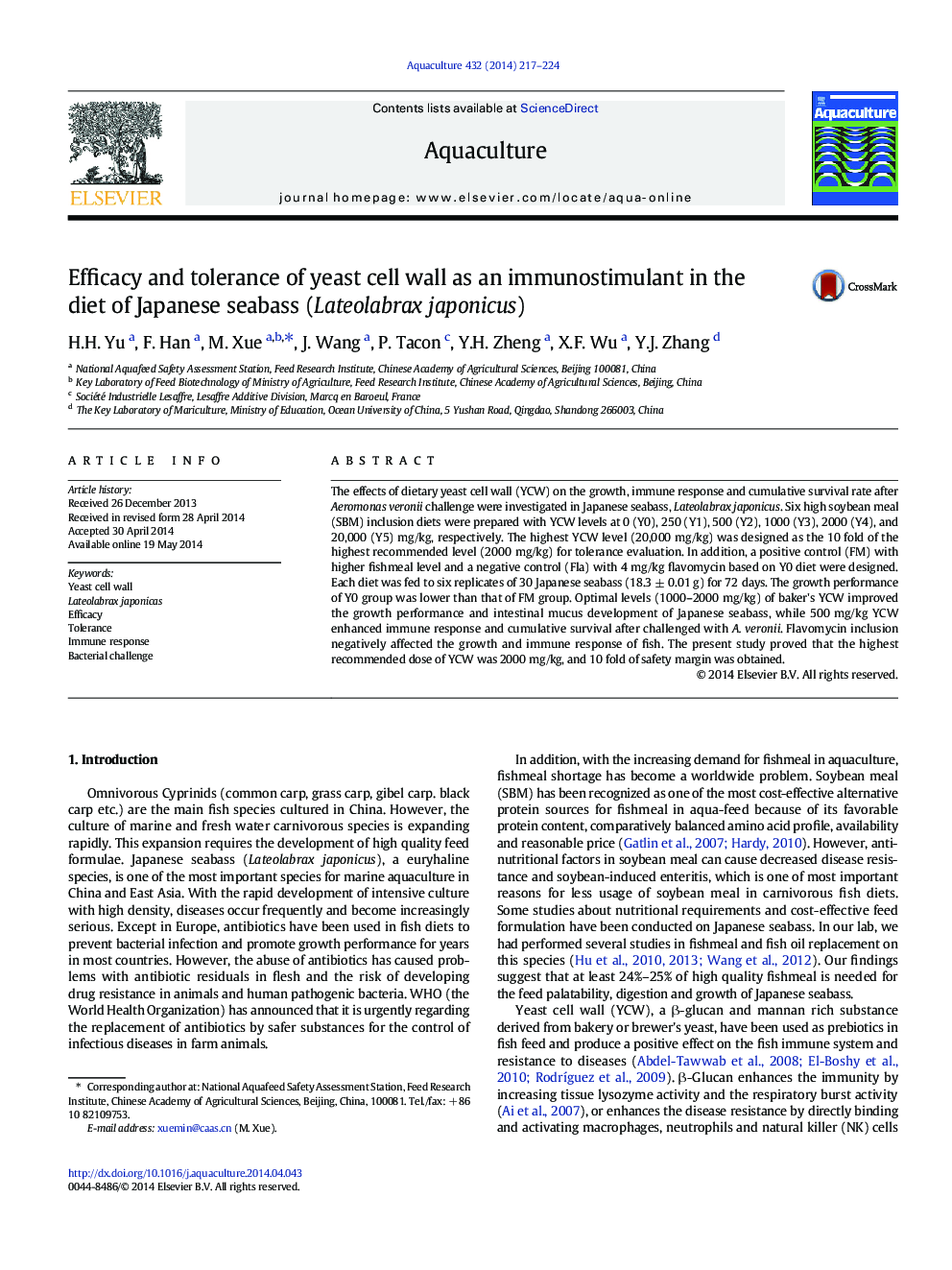| Article ID | Journal | Published Year | Pages | File Type |
|---|---|---|---|---|
| 2421784 | Aquaculture | 2014 | 8 Pages |
•Efficacy and tolerance of YCW in diet of Japanese seabass were tested.•Growth, survival after bacterial challenge in basal and Flavomycin diet were lowest.•1000–2000 mg/kg of YCW improved the growth and intestinal mucus development.•YCW inclusion improved the immunity response of fish after bacterial challenge.•The highest efficacy dose of YCW was 2000 mg/kg, and safety margin was 10 fold.
The effects of dietary yeast cell wall (YCW) on the growth, immune response and cumulative survival rate after Aeromonas veronii challenge were investigated in Japanese seabass, Lateolabrax japonicus. Six high soybean meal (SBM) inclusion diets were prepared with YCW levels at 0 (Y0), 250 (Y1), 500 (Y2), 1000 (Y3), 2000 (Y4), and 20,000 (Y5) mg/kg, respectively. The highest YCW level (20,000 mg/kg) was designed as the 10 fold of the highest recommended level (2000 mg/kg) for tolerance evaluation. In addition, a positive control (FM) with higher fishmeal level and a negative control (Fla) with 4 mg/kg flavomycin based on Y0 diet were designed. Each diet was fed to six replicates of 30 Japanese seabass (18.3 ± 0.01 g) for 72 days. The growth performance of Y0 group was lower than that of FM group. Optimal levels (1000–2000 mg/kg) of baker's YCW improved the growth performance and intestinal mucus development of Japanese seabass, while 500 mg/kg YCW enhanced immune response and cumulative survival after challenged with A. veronii. Flavomycin inclusion negatively affected the growth and immune response of fish. The present study proved that the highest recommended dose of YCW was 2000 mg/kg, and 10 fold of safety margin was obtained.
